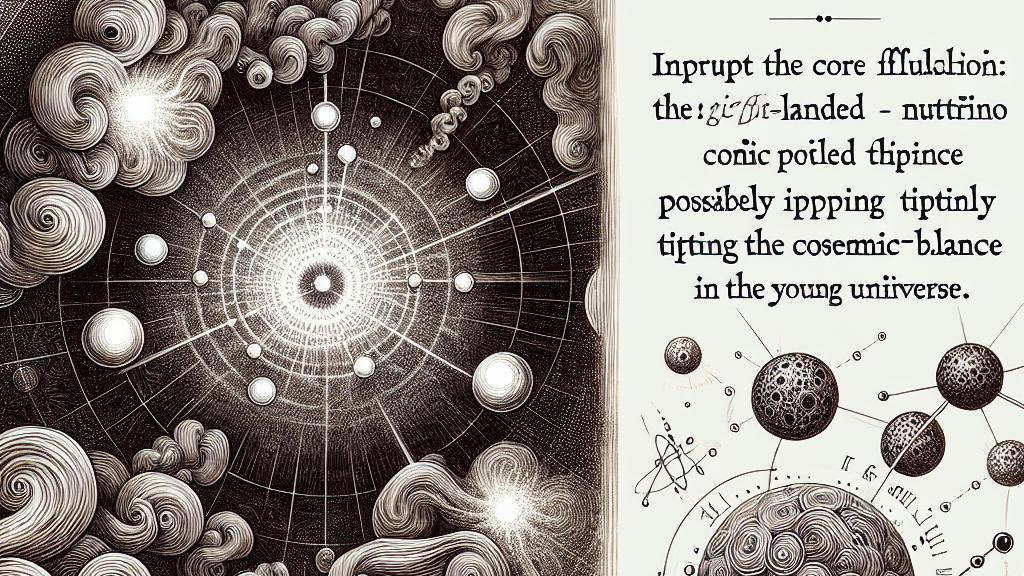Discovering the Role of Ghostly Neutrinos in the Universe
Overview
- Strange right-handed neutrinos could unveil the mystery of why our universe overwhelmingly contains matter.
- These peculiar particles might be key to demystifying the elusive dark matter that binds galaxies.
- Exploring the nature of neutrinos is crucial for unlocking fundamental cosmic secrets.

The Captivating Mystery of Matter and Antimatter
Have you ever wondered why our universe is primarily composed of matter? According to theories in physics, matter and antimatter should exist in perfect harmony, yet we observe a universe dominated by matter! This conundrum has fascinated scientists for years, leading them on a quest for answers. Recent research suggests that ghostly particles called neutrinos, especially the enigmatic right-handed neutrinos, could hold the keys to this mystery. Imagine if these right-handed neutrinos tipped the cosmic balance toward matter in the young universe—this notion sparks excitement and curiosity! Understanding their role could be revolutionary.
Diving Deep into the World of Right-Handed Neutrinos
Let’s delve deeper into right-handed neutrinos. Unlike the more often observed left-handed counterparts, right-handed neutrinos are theorized to be much more massive and infrequent in our detectable universe. This unique nature makes them incredibly intriguing! In the early universe, a vibrant mix of both neutrinos likely existed, dancing together in an intertwining relationship. However, as the universe began its expansion and cooling phase, something extraordinary happened: a symmetry broke, rendering these heavier neutrinos invisible. Consider this—a cosmic game of hide-and-seek, where the heaviest players slipped away. This dramatic shift could explain why the universe evolved into the matter-rich tapestry we see today.
Unlocking the Secrets of Dark Matter
Now, here comes the most thrilling possibility: the connection between right-handed neutrinos and dark matter! Dark matter, the unseen fabric that holds galaxies together, remains one of the greatest enigmas in astrophysics. What if right-handed neutrinos were part of a new particle called the Majoron? This hypothesis tantalizes us with the idea that understanding these ghostly particles could reveal the nature of dark matter! It’s like piecing together a complex puzzle; each discovery brings us closer to a comprehensive picture. By investigating neutrinos, we’re not just searching for answers; we might be uncovering the very foundation of the cosmos.
The Exciting Future of Neutrino Research
While these concepts are still speculative, the investigation of right-handed neutrinos presents a captivating frontier for research. Picture scientists in high-tech labs, utilizing cutting-edge technology to hunt for these elusive particles. With each experiment, the anticipation grows—could we stumble upon a groundbreaking discovery? The thought alone is thrilling! If right-handed neutrinos exist and we can find them, they could help illuminate dark matter and answer profound questions about our universe's existence. The potential for discovery in this field is immense, making the journey into the unknown exciting and profoundly meaningful!

Loading...